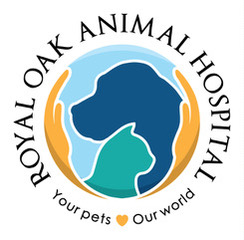Library
-
This handout discusses excessive drooling (hypersalivation) in dogs. There can be many causes for this complaint. Abnormal causes include nausea or gastrointestinal issues, oral pain or irritation, and conformation of the jowls. A short discussion of the more common causes is included. Further diagnostic and treatment options depend on the underlying cause.
-
Dog food labels can be confusing. These labels are an important way that pet food manufacturers communicate nutritional information to consumers. It is important to understand some of the rules regulating cat food labels to better interpret the information they contain.
-
Your veterinarian wants to keep your pet healthy and the fact is that people who are better informed take better care of their pets. Do not be overwhelmed by “medicalese”. Try your best to understand this foreign language and if you cannot quite decipher it, ask your veterinarian to speak more plainly.
-
Decoquinate is given by mouth and is used off label in dogs to prevent coccidia infections. Side effects are uncommon. Do not use in animals that are allergic to it or to treat coccidia infections (only use as a preventive).
-
This handout describes and illustrates this condition, and discusses the causes, clinical signs, diagnosis, and treatment options for degenerative disc disease in dogs. Surgical intervention is specifically outlined and rule-outs for other conditions causing similar signs are also discussed.
-
Degenerative joint disease is arthritis caused by deterioration and degeneration of tissues lining joints. Treatment includes regular gentle exercise, anti-inflammatory drugs and other medications, omega fatty acids, chondroprotectants, and possibly other nutraceuticals. Emerging therapies include rehabilitation therapy, acupuncture, and stem cell or platelet rich plasma therapies. Maintaining your dog’s weight can help prevent degenerative joint disease.
-
Degenerative myelopathy (DM), a disease affecting the spinal cord, results in slowly progressive hind limb weakness and paralysis. It is considered a disease of middle-aged to older dogs, including German shepherds, German shepherd crosses, Siberian huskies, and collies. It will be suspected based on breed, medical history, physical examination, and diagnostic tests. Unfortunately, there is no effective treatment, and it is a progressive, incurable disease.
-
Topical deltamethrin/deltamethrin combination products (brand names PetArmor®, Sentry®, Zodiac®, others) are synthetic pyrethroid insecticides used to repel mosquitoes and kill fleas and ticks on dogs older than 12 weeks of age for up to 6 months. Products may be also used to repel and kill sandflies. Never use in cats or aquatic species. Deltamethrin/deltamethrin combination products come in an impregnated collar form.
-
Demodectic mange is caused by a parasitic mite that lives in the hair follicles of dogs. As long as the body's immune system is functioning properly, these mites cause no harm. Demodectic mange most often occurs when a dog has an immature or weakened immune system, allowing the number of skin mites to increase rapidly. Topical, oral, and injectable medications are available to treat demodectic mange.
-
Plaque and tartar forms on teeth daily and, if allowed to accumulate, will cause progressive periodontal disease. Cleaning your dog's teeth every day at home helps prevent plaque and tartar build-up. For proper dental evaluation and care, your dog must be safely placed under general anesthesia. The examination usually includes dental X-rays and probing to evaluate gum bleeding and periodontal pockets. Tooth scaling will be performed, using both hand and ultrasonic scalers, to remove tartar above and below the gum line. Removing plaque and tartar before disease occurs is the foundation of preventative dentistry.


